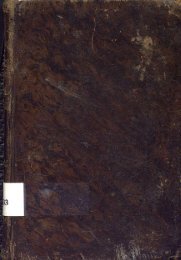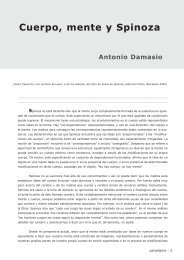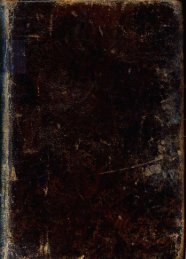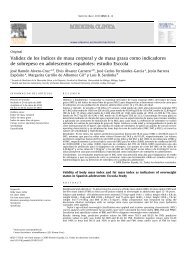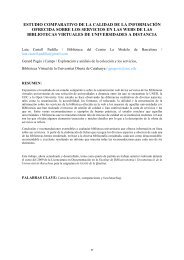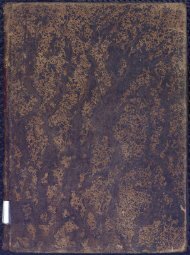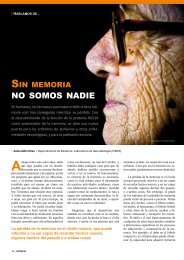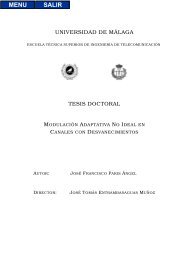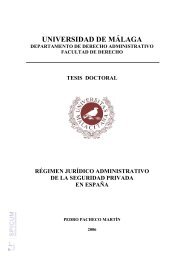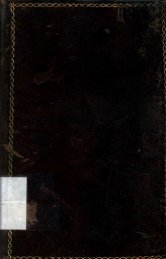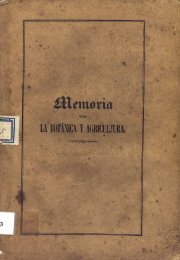Papel de las actividades superóxido dismutasa y catalasa en la ...
Papel de las actividades superóxido dismutasa y catalasa en la ...
Papel de las actividades superóxido dismutasa y catalasa en la ...
Create successful ePaper yourself
Turn your PDF publications into a flip-book with our unique Google optimized e-Paper software.
INTRODUCTION<br />
4.3.1. Porphyridium cru<strong>en</strong>tum<br />
Porphyridium cru<strong>en</strong>tum is a red microalga belonging to Rodophyta family and<br />
Porphyridiales or<strong>de</strong>r, with spherical cells that <strong>la</strong>ck of cell wall. This alga accumu<strong>la</strong>tes<br />
<strong>la</strong>rge amounts of fatty acids (9-14% dry weight), specially araquidonic acid (36%) and<br />
noticeable amounts of eicosap<strong>en</strong>ta<strong>en</strong>oic acid. The protein cont<strong>en</strong>t ranges from 28 to 39%,<br />
and avai<strong>la</strong>ble carbohydrates vary betwe<strong>en</strong> 40 and 57%. The biomass cont<strong>en</strong>ts tocopherol,<br />
vitamin K and a <strong>la</strong>rge amount of carot<strong>en</strong>es (Rebolloso et al., 2000).<br />
P. cru<strong>en</strong>tum cells are capable to excrete a sulphated polysacchari<strong>de</strong>, an acidic<br />
heteropolymer composed of xylose, glucose, ga<strong>la</strong>ctose and sulphate esters (You and<br />
Barneu, 2004). This polysacchari<strong>de</strong> is commercially used as thick<strong>en</strong>er, stabilizer and<br />
emulsifier (Arad et al., 1985, 1988; Adda et al., 1986).<br />
Substances such as araquidonic acid (Kov<strong>en</strong> et al., 2001), carbohydrates (Kumar et<br />
al., 2005), vitamins (Hardie et al., 1990, 1991; Ortuño et al., 1999, 2003; J<strong>en</strong>ey and J<strong>en</strong>ey,<br />
2002), carot<strong>en</strong>oids (Amar et al., 2004) and polysacchari<strong>de</strong>s (Siwicki et al., 1994;<br />
Santarém et al., 1997; Castro et al., 1999; Bagni et al., 2000, 2005; Esteban et al., 2001;<br />
J<strong>en</strong>ey and J<strong>en</strong>ey, 2002; Cook et al., 2003; Couso et al., 2003) pres<strong>en</strong>t in differ<strong>en</strong>t<br />
organisms, have be<strong>en</strong> <strong>de</strong>monstrated their immunostimu<strong>la</strong>nt effects on fish. All of these<br />
compounds have be<strong>en</strong> <strong>de</strong>termined in P. cru<strong>en</strong>tum.<br />
In addition, the fact that P. cru<strong>en</strong>tum culture is not costly makes this alga a good<br />
candidate as a source of immunostimu<strong>la</strong>nt active substances. However, the<br />
polysacchari<strong>de</strong> extraction is a <strong>la</strong>borious process; moreover intraperitoneal<br />
administration is not advisable due to stress by handling. For this reason it is conv<strong>en</strong>i<strong>en</strong>t<br />
to simplify the immunostimu<strong>la</strong>nt administration, providing whole and oral,<br />
supplem<strong>en</strong>ting feed. Last years the number of works, that study whole organisms is<br />
increasing, such as yeasts (Siwicki et al., 1994; Ortuño et al., 2002; Rodríguez et al.,<br />
2003), fungus (Rodríguez et al., 2004) and probiotics (Verschuere et al., 2000; Irianto and<br />
Austin, 2003; Salinas et al., 2005; Díaz-Rosales et al., 2006). However, in spite of the<br />
<strong>la</strong>rge number of studies carried out with extracts or compounds <strong>de</strong>rived from algae<br />
(Kov<strong>en</strong> et al., 2001; Castro et al., 2004; Skjermo and Bergh, 2004; Díaz-Rosales et al.,<br />
83



